The Yunnan chapter of our China guidebook states that if you have time to visit only one province in China, then it should be Yunnan. An unequivocal recommendation that is maybe influenced by the target audience of this particular guidebook. But nobody who has been here can deny this region's strong appeal - mountainous landscape and ethnic diversity that is otherwise not visible in large parts of China. For a taste of both, we undertook a trip to a remote village in the heart of Yuányáng, a region known for its rice terraces.
Yuányáng is actually composite of two town's : Nánshā, the new town which is a 4 hour bus ride from Jian Shui and Xīnjiē, the old town that is a further hour’s ride up a steep hill on a windy road. Once you get to Xīnjiē, you hop on to a shared mini-van to one of a dozen or so outlying villages, each with terraces around that have their own special characteristics.
We picked Duoyishu, one of the more remote villages and almost an hour ride from Xīnjiē. It is a small hillside settlement with a few houses and a couple of guesthouses. The minivan dropped us off on the only road that passes close to the village. We walked down a path, wending our way through backyards, pig pens and chicken coops till we located our guesthouse which was situated right at the edge of cultivated paddy fields. Having asked to see the rooms, we had no hesitation in upgrading our reservation to an upstairs room with large wall-to-wall windows directly overlooking the terraces.
Every inch of hillside in Yuányáng has been crafted over the centuries into gently descending plateau of paddy basins. These stepped shelves gracefully follow the contours of the hills. Each step has a mud boundary wall, acting as a dam to retain water from either rainfall or direct irrigation.
We had arrived late afternoon, well past the specified lunch time at the guesthouse. (There are no restaurants around here other than those attached to the few guesthouses, so we did not have the option of just walking around to find something.) But the cook graciously agreed to whip up something specially for us, and we had quite a table laid out for us in 45 minutes flat.
The area's biggest draw is when the terraces are flooded. Light reflects off the pools of water creating stunning effects (primarily during sunrise and sunset) and these terraces become a magnet for photographers. Right now, the paddy saplings are 7 to 8 inches tall, so instead of reflecting pools what we saw were uniform carpets of green, but no less pleasing to the eye.
One thing that catches your eye even as you approach Yuányáng is the significant presence of the Hani, an ethnic minority of Tibetan origin. Hani women wear distinctive clothes that are richly embroidered and also cover their heads with a headdress decorated with beads. You also begin to hear snatches of conversation that is not Chinese. These lend the region a certain quality very different from the other provinces we visited so far.
There is really nothing much to do in these parts other than take a hike through the fields or walk to one of the overlooks to get expansive views of the terraces. We did a little bit of the former to get some good camera angles, but it seemed quite unnecessary to slog through the mud for too long - we had gotten ourselves a room with a view and we could just sit at the window and gaze outside watching the effects of changing light over the terraces !
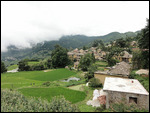
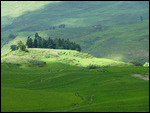
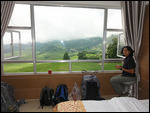
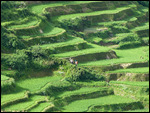


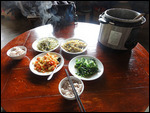


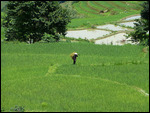
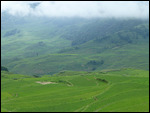
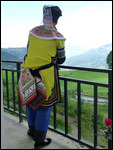
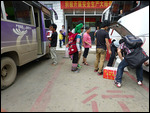
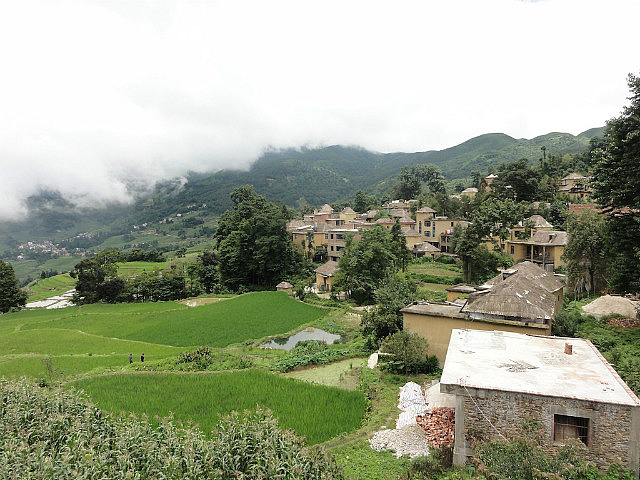
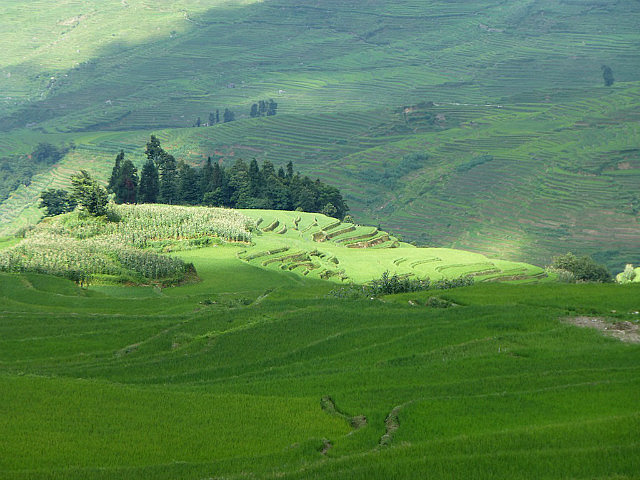



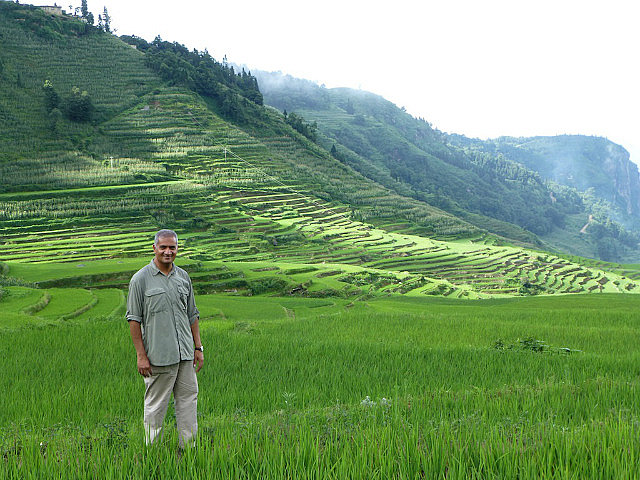
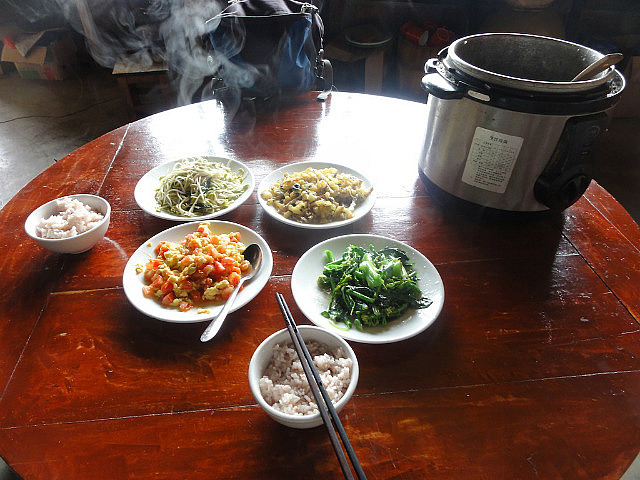
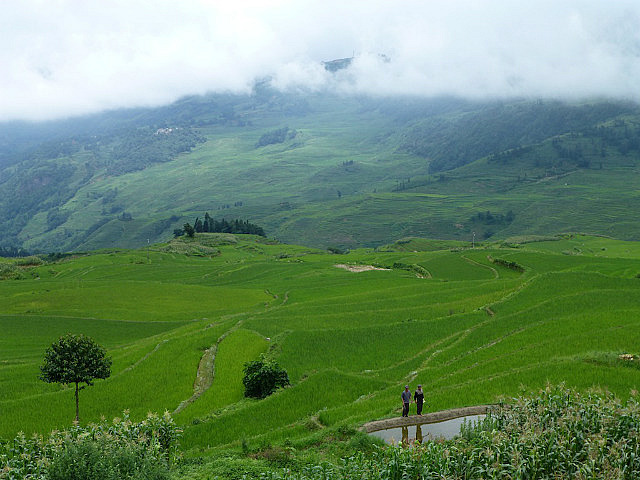

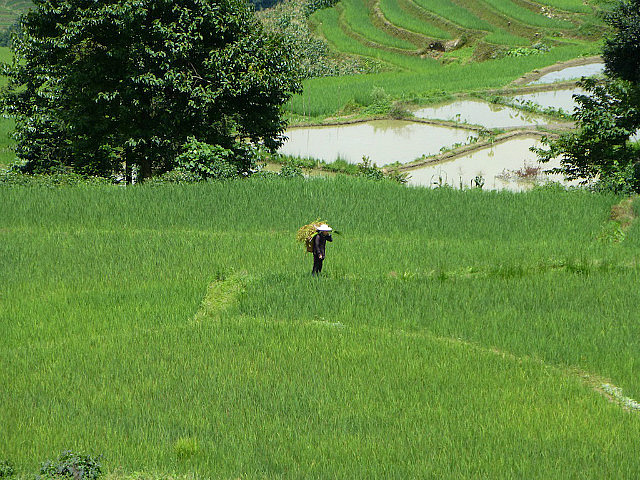
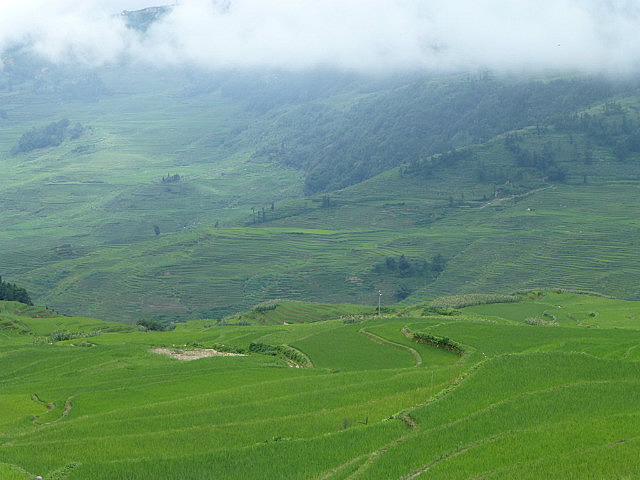
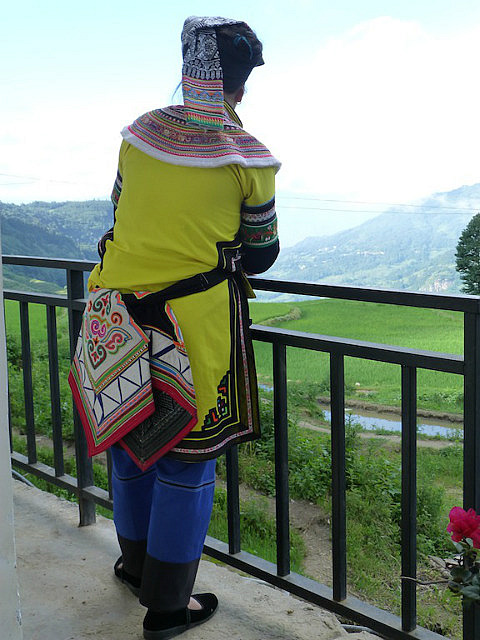
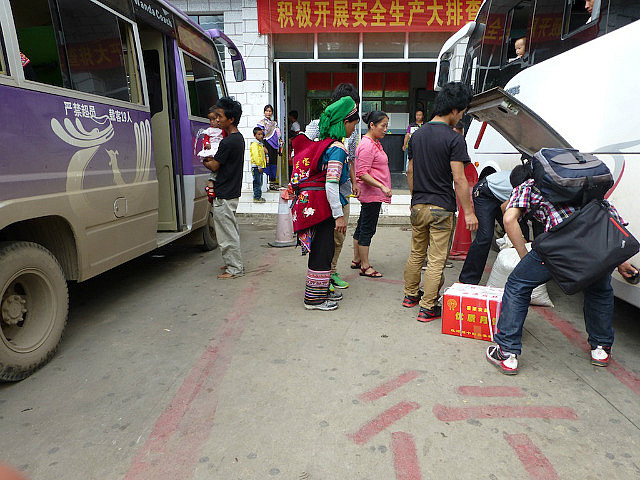
Comments